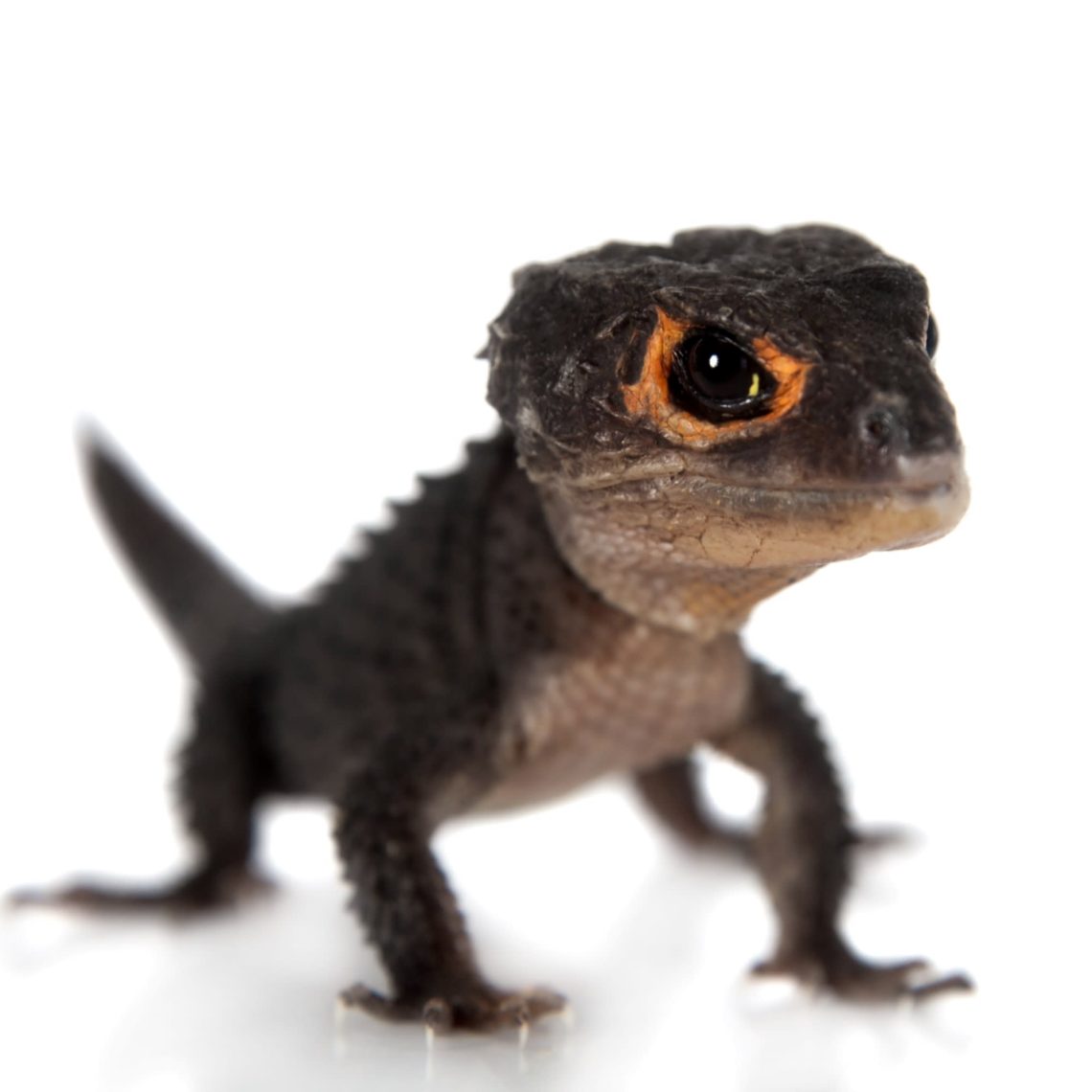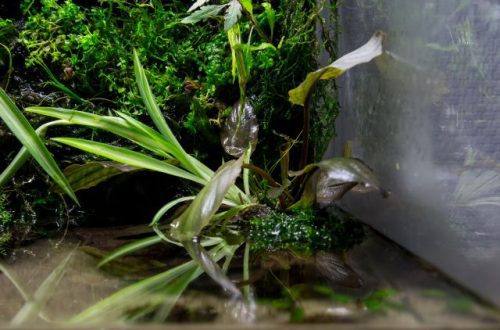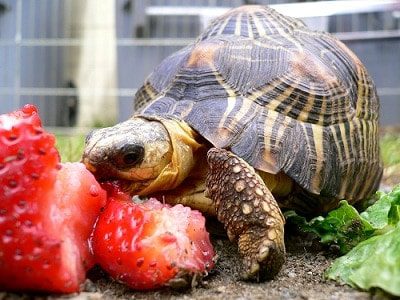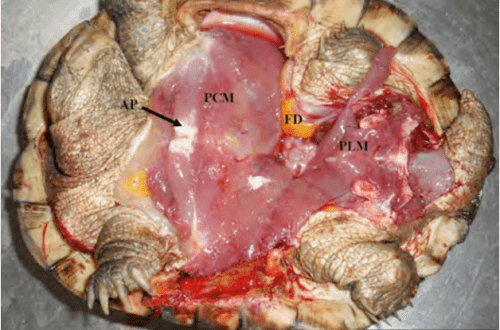
Crocodile skink.
You probably did not even suspect the existence of real dragons, such as if they had left the picture or the screen. Just attach wings to them – and they painted the image of fairy-tale creatures exactly from it. And if you are already a keen terrariumist, then you probably know and dream about these amazing reptiles.
This is a crocodile or red-eyed skink. The body of the skink is covered with pointed plates and scales with outgrowths. And the eyes are surrounded by red-orange “glasses”. Adults, in general, are medium-sized reptiles, about 20 cm in size with a tail. The body is dark brown above, and the abdomen is light. 4 rows of pointed scales stretch along the back, which makes them strikingly similar to crocodiles.
In nature, these dragons are found in the tropical zone of the islands of Papua New Guinea, where they inhabit forests and mountainous areas.
It is important for individuals kept in a terrarium to create conditions that are as close as possible to their native and familiar places. Otherwise, you cannot avoid all sorts of health problems that can end sadly.
So let’s take a closer look at content.
For one skink, a spacious horizontal terrarium with an area of 40 × 60 is suitable. Accordingly, if you decide to have several, then the size will have to be increased. As with all reptiles, the red-eyed skinks’ body temperature depends on the ambient temperature, so it is important to create a temperature gradient inside the terrarium so that the animals can warm up and cool down depending on the need. Such a gradient can be from 24 degrees at a cool point to 28–30 at the warmest point.
Well, like many reptiles, they need ultraviolet light to produce vitamin D3 and absorb calcium. A lamp with a UVB 5.0 radiation level is quite suitable. It should burn all daylight hours – 10-12 hours. Also, do not forget to change the lamp every 6 months, since after this period it produces almost no ultraviolet radiation.
As a primer, coconut filler has proven itself best. It is also important to create shelters where the lizard can hide. It can be half a pot, without sharp edges, and a piece of bark and ready-made burrows from a pet store.
In the tropical forests where these animals live, the humidity is quite high. This should be taken care of in the terrarium. In addition to maintaining a humidity level of 75-80% (this can be achieved by regular spraying with a spray bottle), you need to create a humid chamber, a small shelter with an entrance that will contain wet sphagnum moss. This chamber will help your pets to shed without problems.
Another important observation. In nature, skinks most often settle near a reservoir, so a necessary addition to the terrarium will be the creation of a small pool in which the pet can swim. The water level should not be too high, the lizards should be able to walk along the bottom. Since they are very fond of water procedures, the water should be changed daily. In addition, such a pool is an unconditional assistant in maintaining humidity.
That’s actually all the nuances of the conditions of detention. Now it’s time to talk about what the smaller copy of the dragon eats. Under natural conditions, they come out at dusk to hunt for insects. So a varied diet at home will consist of crickets, cockroaches, zoophobos, snails. It is important to add calcium supplements. It is sold in powder form, in which you need to roll the fed insects. Growing cubs need daily feeding, but adults will get by with one feeding every 2 days.
In general, these reptiles are very caring parents, the female carefully cares for the egg, and the father often takes care of raising the hatched cub, teaching, helping and protecting the offspring.
These reptiles are shy and get used to humans for a long time, often they prefer to hide in their shelters during the day, and go out to feed only closer to the night. Therefore, it is somewhat problematic to observe them. They can perceive the owner for a long time as one big danger, hiding from you, freezing, at your presence, And if you try to pick them up, they can start screaming and biting. And with inept and rude handling – as a step of desperation – to drop the tail.
A new one will grow, but not as chic. So be patient, show love, care and accuracy in handling these amazing creatures.
To keep a crocodile skink you need:
- Spacious terrarium with plenty of hiding places and a humid chamber.
- Temperature gradient from 24 to 30 degrees.
- Humidity at the level of 70–80%.
- UV lamp 5.0
- Pond with regular water changes.
- Feeding insects with the addition of calcium top dressing
- Careful handling.
You can not:
- Keep in dirty conditions, in a terrarium without shelters, a wet chamber and a reservoir.
- Do not observe the temperature regime.
- Keep in conditions of low humidity.
- Feed meat and plant foods.
- Do not give mineral supplements
- Harsh and rough handling.





